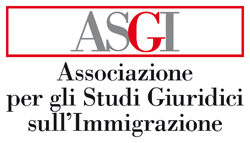di William Chiaromonte e Madia D’Onghia
Abstract: Il saggio, muovendo dalla constatazione che le sanatorie hanno rappresentato, e tuttora rappresentano, il cardine delle politiche migratorie italiane, anche in considerazione dei vistosi limiti che caratterizzano l’attuale assetto della regolazione dell’accesso al lavoro da parte degli stranieri, passa anzitutto in rassegna i sette precedenti provvedimenti di sanatoria, evidenziandone contenuti e limiti, per giungere a illustrare le motivazioni che nel maggio 2020 hanno spinto l’Esecutivo a utilizzare nuovamente lo strumento per far fronte all’emergenza sanitaria, da un lato, e a quella occupazionale, dall’altro. Si illustrano, quindi, le condizioni di accesso alla regolarizzazione del 2020 e i principali profili di criticità della procedura, anche riguardo al campo di applicazione soggettivo e oggettivo, che inevitabilmente hanno condizionato il suo successo, come dimostrano i dati ufficiali, per poi svolgere alcune considerazioni conclusive.
Abstract: Moving from the evidence that regularisations have represented, and still represent, the cornerstone of Italian migration policies, due also to conspicuous limits affecting the current regulatory framework of migrants’ access to work, the paper reviews seven previous regularisations’ contents and limits, with a view to discussing the reasons that in May 2020 prompted the Italian Government to fall back on yet another regularisation to deal with the Covid-19 emergency, on the one hand, and the occupational emergency, on the other hand. Thus, the requirements and the main critical aspects of the 2020 procedure are outlined, by taking also into account the subjective and objective scope of the regularisation, inevitably affecting its effectiveness, as shown by the official data; lastly, some concluding remarks are carried out.




